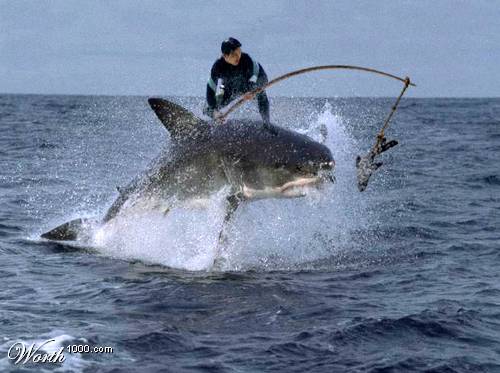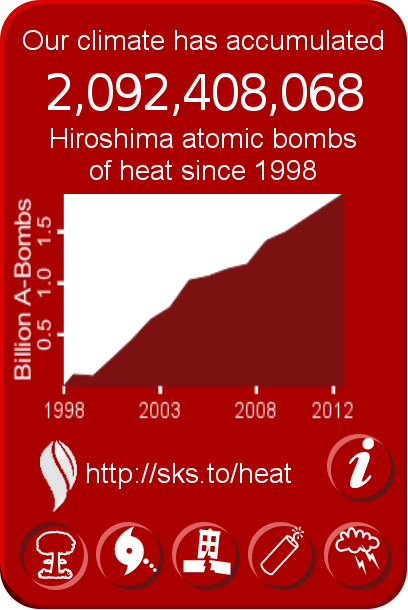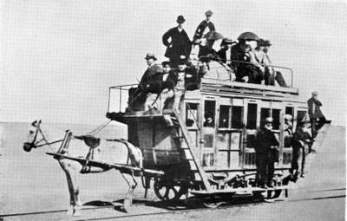Or, to paraphrase Anita Bryant, a day without collapse is like a day without sunshine!

(Though I still prefer another paraphrase: Beer: It's not just for breakfast anymore!)
On the sea level rise thing--we've gone over this many times already on different threads, so I'll try to be brief here.
One can look at 'standard' predictions of one meter rise by the end of the century and think that this is something we can adjust for. But:
1) We are in a period of increasing scarcity of both energy and materials to continuously rebuild entire cities and other infrastructure.
2) Even if we had the energy to do this, we would have to get it from non-carbon sources, which will be in great demand for doing everything else that our society wants to do.
3) Official slr rates like the above overlook the fact that, as our top glaciologists (see nearly any interview with or talk by the likes of Jason Box or Richard Allen or Eric Rignot) keep trying to remind us, icesheets don't collapse gradually or linearly. Evidence from past collapses show that they go through a slow phase and then there are a few decades of very rapid collapse. It is essentially impossible to know when these rapid collapses will happen.
4) Specific localities are very likely to see very different rates of slr, some very little (for a while) others quite a lot and fairly abruptly. As it happens, the East coast of the US is one place where rather sudden slr is quite likely, since the AMOC (more or less the Gulf Stream) is already backing up and altering its path. It is just these kinds of changes in currents that can bring about rather sudden spikes in slr.
5) Finally, and perhaps most importantly, even if slr did the unusual thing and increased more-or-less linearly/gradually, the actual devastating effects on particular coastal locals will mostly be sudden and overwhelming, and more and more so going forward. Even if you avoid devastation from sudden collapse of ice sheets or from sudden shifts in ocean currents, Sandy and Katrina should have shown us that vulnerable coastal areas do not have to 'wait' till average sea levels are above their shores to be in trouble.
Starting from already higher sea levels, storms, when they come, are ever more likely to be ever more massive and powerful--fueled by higher atmospheric temperatures, higher humidity levels, and higher sea surface temperatures--and to be steered by new jet stream configurations more and more towards areas that have little or now experience dealing with major hurricanes. Higher humidity levels (already ~8% higher than historical levels globally) will mean that the rainfall associated with these storms will also tend to be much, much higher.
So huge amounts of ocean water will be pushed into land, up to and beyond amounts we usually associate with a major tsunami--Haiyan ocean surge was ~40 feet--on top of the already higher sea levels, while at the same time, ungodly deluges of rain will be flooding the same locals from the above and from the mainland.
These are the events--which become more and more common pretty much everywhere and more and more during any time of year--that will devastate ports, coastal cities, and coastal areas, not so much the gradual, millimeter-by-millimeter rises that one thinks of from the long range numbers. And these devastating events, by their natures, are
unpredictable as to exactly where they will hit and when, at least up till a few days or hours before landfall.
More than anything, it is the uncertainties laid out above that will make it difficult to plan for the slr we now know is coming--mostly because of the timing: Do you move a port or major city inland in anticipation of a sudden ice sheet collapse, a shift of ocean current, or a major hurricane swell? But it might turn out that the event doesn't turn up for years or decades, during which time you will have lost the advantages of having an operating port/city by the coast.
The smartest strategy, it seems to me, is to start moving most major cities well inland (and up hill, where available), and keep the ports--that must be rebuilt every few decades anyway, as I understand it--at or near (current) sea levels. This, after all, was the pattern for such ancient cities as Athens (whose sea port was/is Piraeus) and Rome (whose sea port was Ostia).
I will just also note that the area where there is indeed (so far mostly) gradual increase in slr more and more often taking over streets and other parts of the city is Miami and its coastal suburbs, particularly Miami Beach. They are not, so far, dealing with it in the rational manner that Agent lays out--steadily moving away from areas that are clearly destined to be underwater permanently before too long.
They are mostly in denial.
And that is the most likely reaction we will see from most cities, most states, most localities and most nations most of the time.
That is, until Agent succeeds in taking over the world and establishing his enlightened, rational, sensible approach to everything everywhere!



(I see my attempt to be 'brief' failed pretty badly here!


)









 )
)





